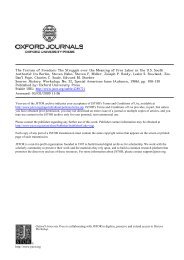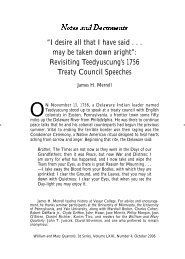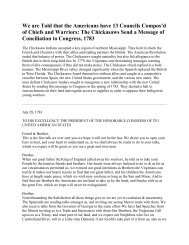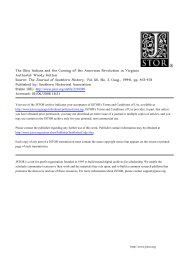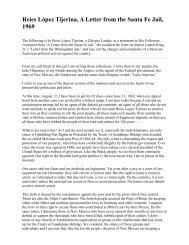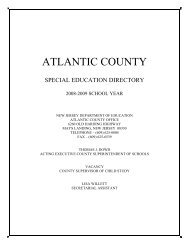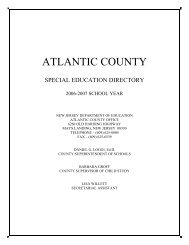A Historical and Regional Overview of Latinas in the United ... - CUNY
A Historical and Regional Overview of Latinas in the United ... - CUNY
A Historical and Regional Overview of Latinas in the United ... - CUNY
You also want an ePaper? Increase the reach of your titles
YUMPU automatically turns print PDFs into web optimized ePapers that Google loves.
Introduction: A <strong>Historical</strong> <strong>and</strong> <strong>Regional</strong> <strong>Overview</strong><br />
The Gómez family immigrated to Kansas City,<br />
Missouri, <strong>in</strong> 1917 from Jalisco, Mexico. The<br />
eighteen children pooled <strong>the</strong>ir resources from<br />
<strong>the</strong>ir jobs <strong>in</strong> <strong>the</strong> meatpack<strong>in</strong>g houses <strong>and</strong> beer<br />
factories to support <strong>the</strong> family. Courtesy <strong>of</strong><br />
Lara Med<strong>in</strong>a.<br />
families headed north as migrant farmworkers, <strong>the</strong>ir<br />
numbers rose to as many as 80,000. Women, alongside<br />
male relatives <strong>and</strong> children, worked <strong>in</strong> <strong>the</strong> beet fields <strong>of</strong><br />
M<strong>in</strong>nesota <strong>and</strong> Michigan, <strong>in</strong> <strong>the</strong> onion fields <strong>of</strong> Ohio,<br />
<strong>and</strong> on o<strong>the</strong>r crops throughout <strong>the</strong> region. Lat<strong>in</strong>a/o<br />
immigrants also found <strong>the</strong>mselves <strong>in</strong> rural or small<br />
town communities <strong>in</strong> places like Nebraska, Kansas,<br />
<strong>and</strong> Iowa.<br />
Not all <strong>Lat<strong>in</strong>as</strong> dur<strong>in</strong>g this time period, however,<br />
came from work<strong>in</strong>g-class backgrounds. A small number<br />
<strong>of</strong> pr<strong>of</strong>essional Lat<strong>in</strong> American migrants also made<br />
<strong>the</strong>ir homes <strong>in</strong> urban areas <strong>in</strong> <strong>the</strong> region. Argent<strong>in</strong>ian,<br />
Colombian, Costa Rican, Cuban, Honduran, Mexican,<br />
<strong>and</strong> Panamanian consuls had <strong>of</strong>fices <strong>in</strong> cities like Chicago,<br />
while Lat<strong>in</strong> American doctors, lawyers, <strong>and</strong><br />
o<strong>the</strong>r pr<strong>of</strong>essionals relocated <strong>the</strong>ir families to midwestern<br />
cities where <strong>the</strong>ir services were <strong>in</strong> dem<strong>and</strong><br />
among <strong>the</strong> grow<strong>in</strong>g migrant population. The wives <strong>of</strong><br />
<strong>the</strong>se pr<strong>of</strong>essional men <strong>of</strong>ten filled <strong>the</strong> roles <strong>of</strong> socialites,<br />
cultural ambassadors, <strong>and</strong> community leaders.<br />
They sometimes hosted or made appearances at social<br />
functions such as national <strong>in</strong>dependence celebrations<br />
where <strong>the</strong>y represented <strong>the</strong>ir countries <strong>of</strong> orig<strong>in</strong> to <strong>in</strong>ternational<br />
government <strong>of</strong>ficials <strong>and</strong> <strong>the</strong> broader<br />
American society. Lat<strong>in</strong> American students who studied<br />
<strong>in</strong> <strong>the</strong> Midwest also contributed to <strong>the</strong> migrant population.<br />
Lat<strong>in</strong>a young women from wealthy families<br />
who graduated from high school or college <strong>in</strong> <strong>the</strong> region<br />
were sometimes noted <strong>in</strong> local Spanish-language<br />
newspapers.<br />
In Chicago Spanish-language newspapers <strong>of</strong> <strong>the</strong><br />
1920s <strong>and</strong> 1930s recognized <strong>the</strong> presence <strong>of</strong> Lat<strong>in</strong>a immigrant<br />
readers <strong>and</strong> pr<strong>in</strong>ted columns that catered<br />
specifically to women. Advice columns addressed topics<br />
like beauty <strong>and</strong> homemak<strong>in</strong>g. They advised readers<br />
16<br />
q<br />
on discipl<strong>in</strong><strong>in</strong>g children <strong>and</strong> <strong>the</strong> cultural <strong>and</strong> moral education<br />
<strong>of</strong> Lat<strong>in</strong> American children grow<strong>in</strong>g up <strong>in</strong> <strong>the</strong><br />
<strong>United</strong> States. Women also found recipes <strong>and</strong> housekeep<strong>in</strong>g<br />
tips <strong>in</strong> <strong>the</strong> pages <strong>of</strong> Spanish newspapers. In<br />
addition, numerous advertisements announced products<br />
like beauty creams <strong>and</strong> cosmetics designed to appeal<br />
to Lat<strong>in</strong>a migrant women. In <strong>the</strong> grow<strong>in</strong>g consumer<br />
culture <strong>of</strong> <strong>the</strong> <strong>United</strong> States, <strong>Lat<strong>in</strong>as</strong> too were<br />
potential consumers. <strong>Lat<strong>in</strong>as</strong> also used <strong>the</strong> newspapers<br />
for <strong>the</strong>ir own entrepreneurial <strong>in</strong>terests—to advertise<br />
<strong>the</strong>ir board<strong>in</strong>ghouses or restaurants to fellow migrants.<br />
Such advertisements sometimes <strong>in</strong>cluded a<br />
photograph <strong>of</strong> <strong>the</strong> proprietress <strong>of</strong> <strong>the</strong> bus<strong>in</strong>ess as a way<br />
to personalize <strong>the</strong> establishment <strong>and</strong> evoke a sense <strong>of</strong><br />
“home” for potential migrant male customers.<br />
After <strong>the</strong> Great Depression <strong>the</strong> Lat<strong>in</strong>a/o population<br />
<strong>in</strong> <strong>the</strong> Midwest decl<strong>in</strong>ed dramatically. Deportation <strong>and</strong><br />
repatriation campaigns depleted <strong>the</strong> Mexican migrant<br />
communities <strong>in</strong> urban <strong>and</strong> rural areas alike. By 1936,<br />
for example, only 1,200 Mexicans rema<strong>in</strong>ed <strong>in</strong> Detroit,<br />
a city that had had 15,000 immigrants only seven years<br />
earlier <strong>and</strong> was <strong>the</strong> second-largest urban settlement <strong>of</strong><br />
Mexicans <strong>in</strong> <strong>the</strong> Midwest. Mexican communities dw<strong>in</strong>dled<br />
throughout <strong>the</strong> region <strong>and</strong> did not reemerge until<br />
after World War II. The postwar era, however, also saw<br />
a rise <strong>in</strong> <strong>the</strong> migration <strong>of</strong> Puerto Rican women, men,<br />
<strong>and</strong> children.<br />
The years after World War II witnessed a renewed<br />
flow <strong>of</strong> Lat<strong>in</strong>a/o migrants. In particular, Puerto Ricans<br />
became an attractive source <strong>of</strong> labor for some American<br />
companies. Women <strong>and</strong> men were recruited for<br />
agricultural labor, pick<strong>in</strong>g crops as Mexican immigrants<br />
had done <strong>in</strong> earlier decades. Industrial employers,<br />
however, also began seek<strong>in</strong>g out Puerto Rican<br />
labor. Puerto Rican women <strong>and</strong> men found work <strong>in</strong>



